The July of 1945 Trinity nuclear tests, which were part of the Manhattan Project, marked the first-ever nuclear explosion in the history of our planet. Theses tests were conducted at the U.S airforce base at Alamogordo, New Mexico, at a distance of roughly 192 km from the nearest population settlement. Soon after testing these nuclear weapons, the historic bombs were dropped on Japan, which put an end to WW2.
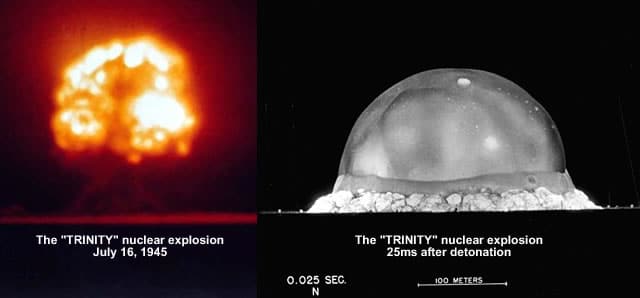
Nuclear bomb testing came with several deadly side effects; hence the government wanted to keep it a secret. It was all going well for the U.S administration to hide the testing and its devastating effects until one camera company found pieces of evidence that all drew a line in the same direction: radioactive atmosphere.
Nuclear explosions come with a massive noise and a radioactive wave that can swipe several cities in seconds. For the first part, the U.S managed to hide the facts from its people by covering the explosion as one of the accidental blasts of conventional explosives. They knew the effects of the blast and had made up stories of lies prepared in advance. What they couldn’t hide were the deadly radio-active isotopes that traveled by air to the nearest population.
The dispersed radioactive isotopes were impossible to hide, although they are invisible, it was for there caused effects that it had to be revealed soon. And that happened when Kodak discovered strong evidence of these dangerous radioactive tracks.
How Kodak discovered the Trinity Tests
The trails began when the famous photograph company found some strange issues with their photographic film. Kodak started getting tonnes of complaints from customers that they received foggy developed films. The reason was simple, these films are highly sensitive to the radioactive isotopes, and they got affected by the blast. It was alarming as Kodak had its headquarters at a distance of 3000 km, and the atmosphere even at this distance was radioactive.
Kodak had its production center equipped to safeguard the films not to be exposed to the outer environment. However, the facility wasn’t enough to secure them from the beta radioactive isotopes.
There are two types of photographic films; the more commonly used is a bit more resilient to such contamination. Unfortunately, Kodak was using a much more sensitive X-ray film that got more effected and showed black dots over the developed pictures. Kodak knew that these X-ray films are sensitive and even took considerate measures in its packaging for them not to get contaminated, as even a little exposure to light can turn them useless. However, they didn’t plan on securing them from nuclear waves.
Julian H. Webb was a scientist employed with Kodak, the big mind behind tracing the trails of fogging in films. One thing led to another, and the final answer was that the contamination was coming from its own packaging. Kodak had its packaging production center located in Vincennes, Indiana. Another packaging production mill was located in Iowa, and the products from both the centers showed similar issues caused by a radioactive isotope.
Red Flag Number 1
Alpha particle radiation and beta particle radiation are the two types of radioactive isotopes. Upon in-depth investigation, Webb found that the contamination was caused due to the beta particles present in the atmosphere, far more lethal and deadly than alpha particles. The beta particles are strong in penetration, whereas the alpha particles could be stopped with a paper layer.
Red Flag Number 2
As Webb kept on investigating further, he found the half-life of the particles was 30-days, which meant the source of these beta particles was recent. This led Webb to later classify the particles as Cerium-141, which is the most common nuclear reaction content.
Red Flag Number 3
Julian Webb was confident of his conclusions that these contamination effects were caused by none else but a nuclear detonation. A report was released in 1949 in which he states: The source of this contamination was the wind-borne radio-active fission products, which came from the atom bomb explosion in New Mexico on July 16, 1945.
However, Webb had it all figured out soon after the explosion remained silent until 1949 when his research was first published. The reason behind it was to maintain national security as Webb knew the information that he has cracked is pretty sensitive. The guy even worked on the Manhattan project previously.
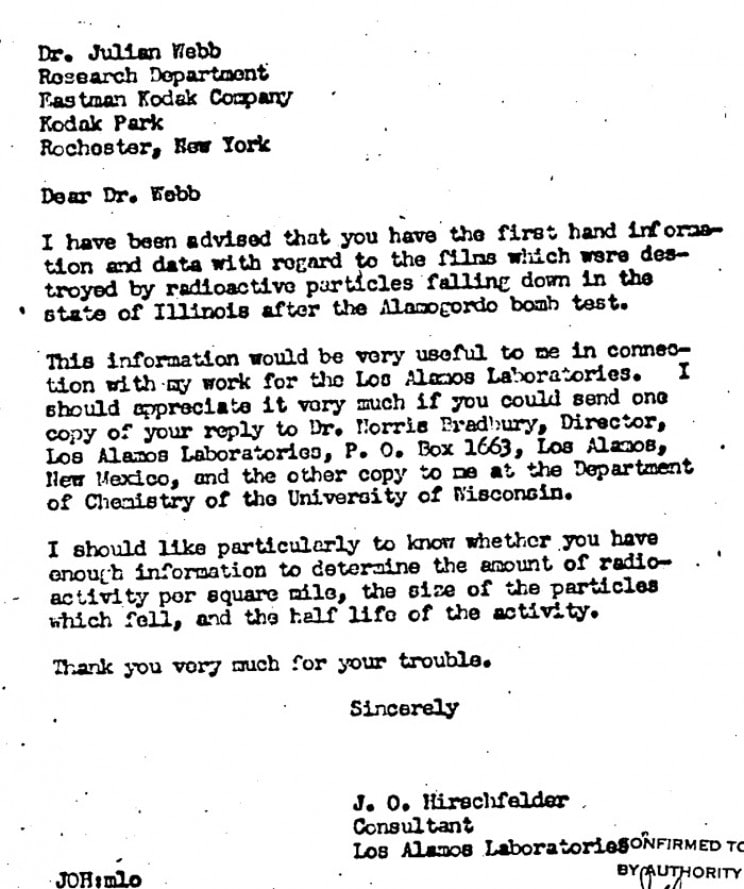
Timely Warnings Were Given:
Numerous leading researchers on the Manhattan project suggested that the U.S. government develop nuclear testing sites on the East coast. It could have prevented air currents from carrying fallout west, towards the entire U.S. Some other suggestions were that the tests should be carried at least 240 km from the population centers. However, the government chose convenience over safety measures, and the results were somewhat devastating.
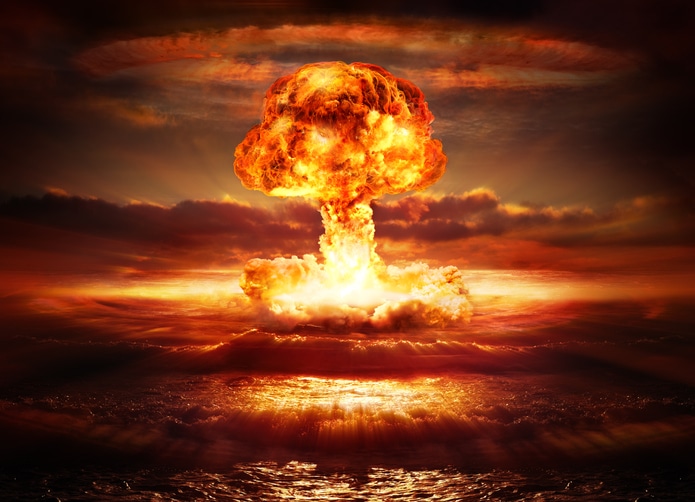
Kodak, after finding out the traces of nuclear radiation, complained about the matter to the Atomic Energy Commission and even threatened them to sue the government for the caused damage to their products. However, the government still wanted the tests to be a secret and agreed with Kodak to give them early dates of tests to apply the timely preventive measures. And still was urged to keep the sensitive matter a secret.
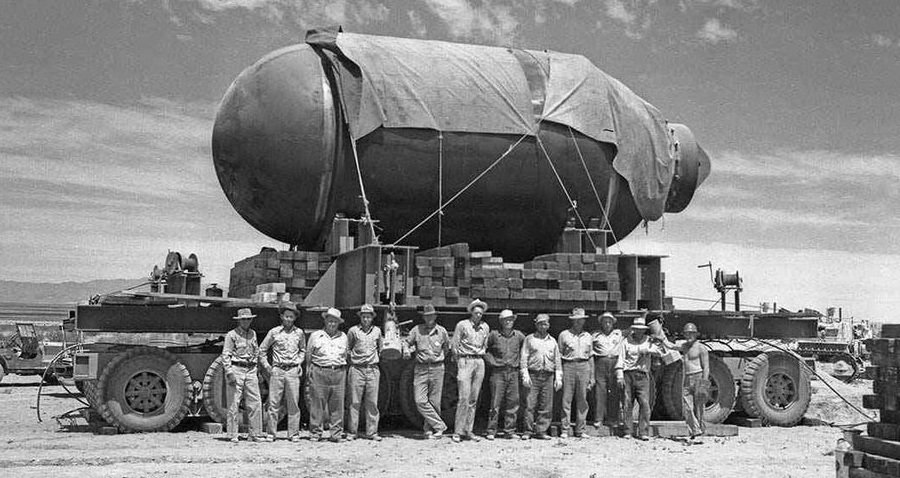
They Agreed To Secrecy
Keeping it a secret wasn’t something that Kodak could be blamed for. They had the government threatening them to keep quiet, and for them to make their business survive, they had to follow what the government was suggesting to them at the time.
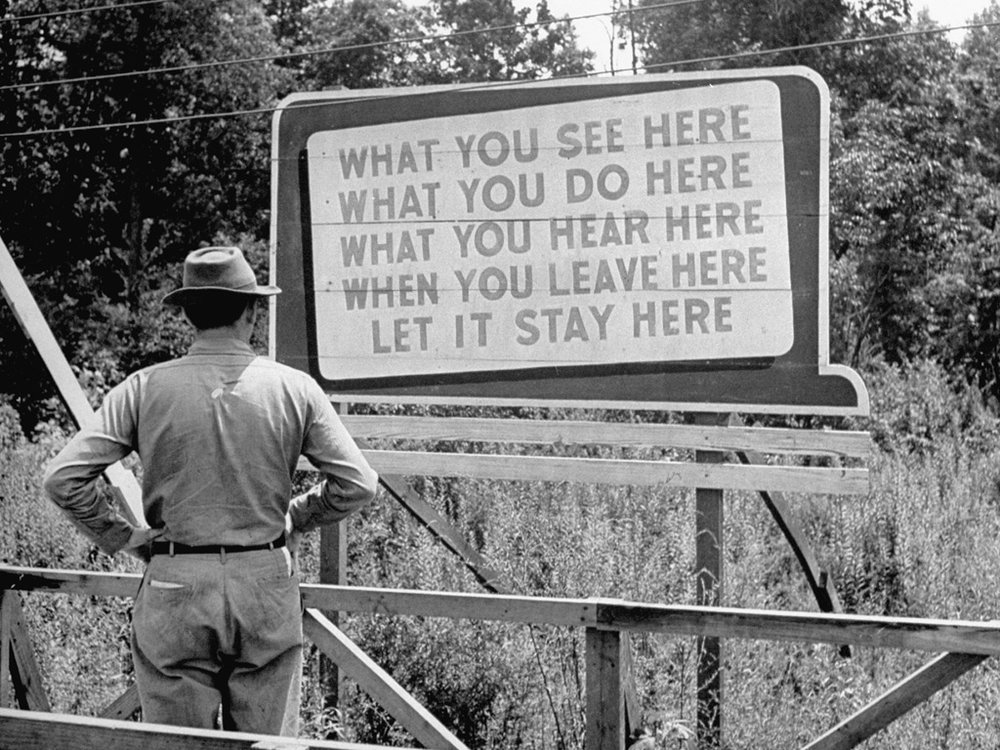
However, with time, and with more and more health implications reported, it had to get out. In the 1990s national cancer institute released a report on findings of these effects linked with the trinity nuclear tests. Thousands were reported to have thyroid cancer and other deadly health implications.
Congressional hearings were held later on, based on the report from the national cancer institute. And soon after the hearings, it was made clear that every person living in America at the time of these tests were at significant health risk.
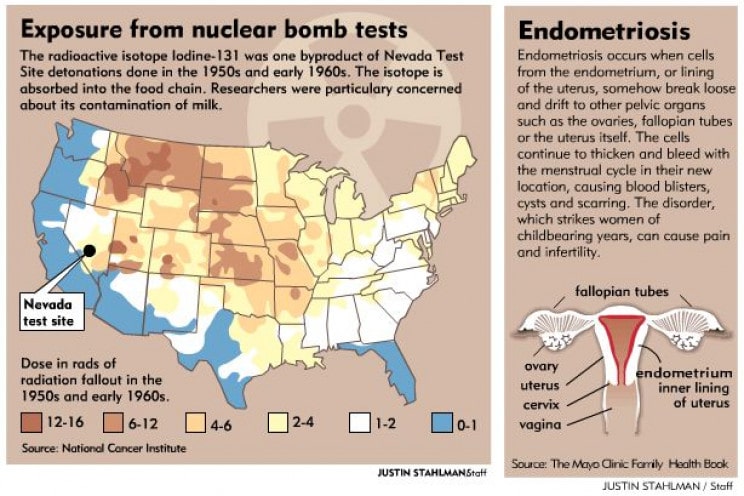
An early warning to the people could have caused far fewer health implications. They could have opted to conduct the test at a suggested distance. There were various other measures that the U.S administration could have taken into account for safe nuclear testing. However, It was a huge blunder on their part to try and keep it a secret just for making the tests more convenient.


